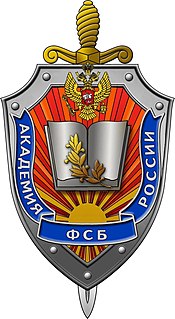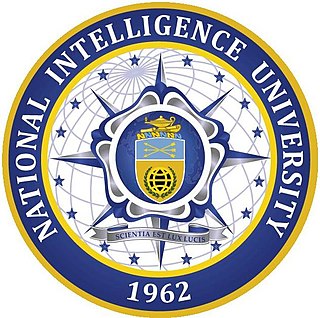 W
WThe analysis of competing hypotheses (ACH) is a methodology for evaluating multiple competing hypotheses for observed data. It was developed by Richards (Dick) J. Heuer, Jr., a 45-year veteran of the Central Intelligence Agency, in the 1970s for use by the Agency. ACH is used by analysts in various fields who make judgments that entail a high risk of error in reasoning. ACH aims to help an analyst overcome, or at least minimize, some of the cognitive limitations that make prescient intelligence analysis so difficult to achieve.
 W
WAnalytic confidence is a rating employed by intelligence analysts to convey doubt to decision makers about a statement of estimative probability. The need for analytic confidence ratings arise from analysts' imperfect knowledge of a conceptual model. An analytic confidence rating pairs with a statement using a word of estimative probability to form a complete analytic statement. Scientific methods for determining analytic confidence remain in infancy.
 W
WCounterintelligence is an activity aimed at protecting an agency's intelligence program from an opposition's intelligence service. It includes gathering information and conducting activities to prevent espionage, sabotage, assassinations or other intelligence activities conducted for or on behalf of foreign powers, organizations or persons.
 W
WThe Department of Homeland Security (DSN), also known as Department of National Security, is an advisory staff department of the Spanish Prime Minister's Office on matters of National Security and it is a permanent member of the Spanish National Security Council. This body was created to reinforce the organization of the President's office, by assisting the President of the Government in his responsibility leading the national security policy of Spain. It was created on 2012 by the Royal Decree 1119/2012, of July 20, by which the structure of the President's office of the Government is modified.
 W
WThe FSB Academy formerly known as the Dzerzhinsky Higher School of the KGB, is an education and research institution federally chartered to prepare Russian Intelligence personnel for the Federal Security Service in particular and for the Russian Intelligence Community in general.
 W
WIntelink is a group of secure intranets used by the United States Intelligence Community. The first Intelink network was established in 1994 to take advantage of Internet technologies and services to promote intelligence dissemination and business workflow. Since then it has become an essential capability for the US intelligence community and its partners to share information, collaborate across agencies, and conduct business. Intelink refers to the web environment on protected top secret, secret, and unclassified networks. One of the key features of Intelink is Intellipedia, an online system for collaborative data sharing based on MediaWiki. Intelink uses WordPress as the basis of its blogging service.
 W
WThe Intelligence Center for Counter-Terrorism and Organized Crime (CITCO) is the Spanish domestic intelligence agency responsible for the prevention of terrorism, organized crime and other violent radical organizations by managing and analyzing all internal information of the country. It was formed in October 2014 by merging of the National Anti-Terrorism Coordination Center and Intelligence Center against Organized Crime.
 W
WThe National Intelligence University (NIU), formerly known as the National Defense Intelligence College and the Joint Military Intelligence College, is a federally chartered research university in Bethesda, Maryland. NIU is the United States Intelligence Community's (IC) institution for higher learning in fields of study central to the profession of intelligence and national security. NIU awards undergraduate and graduate degrees, graduate certificates, and research fellowships to prepare personnel for senior positions in the IC and the broader national security enterprise. Since 1963, more than 80,000 military and civilian students have attended the university. Formerly located at the Defense Intelligence Agency headquarters in Washington, D.C., NIU's primary campus is now located at Intelligence Community Campus-Bethesda (ICC-B) with four additional locations around the world. The university's John T. Hughes Library is also located at ICC-B. NIU is the only university in the United States where students can study and complete research at the Top Secret/Sensitive Compartmented Information level.
 W
WThe OODA loop is the cycle observe–orient–decide–act, developed by military strategist and United States Air Force Colonel John Boyd. Boyd applied the concept to the combat operations process, often at the operational level during military campaigns. It is now also often applied to understand commercial operations and learning processes. The approach explains how agility can overcome raw power in dealing with human opponents. It is especially applicable to cyber security and cyberwarfare.
 W
WThe Structured Geospatial Analytic Method (SGAM) is both as an analytic method and pedagogy for the Geospatial Intelligence professional. This model was derived from and incorporates aspects of both Pirolli and Card’s sensemaking process and Richards Heuer’s Analysis of Competing Hypotheses model. This is a simplified view of the geospatial analytic process within the larger intelligence cycle.